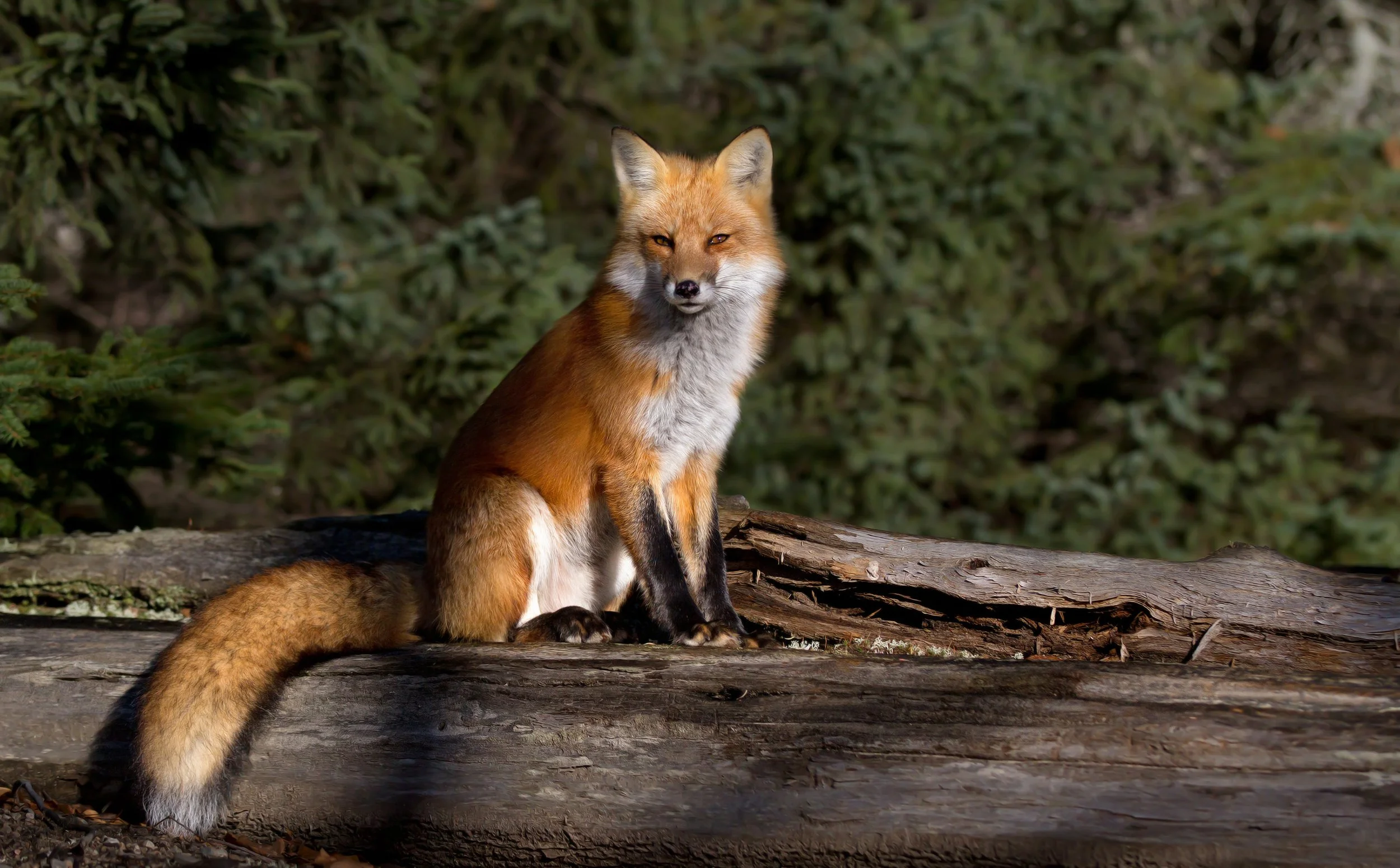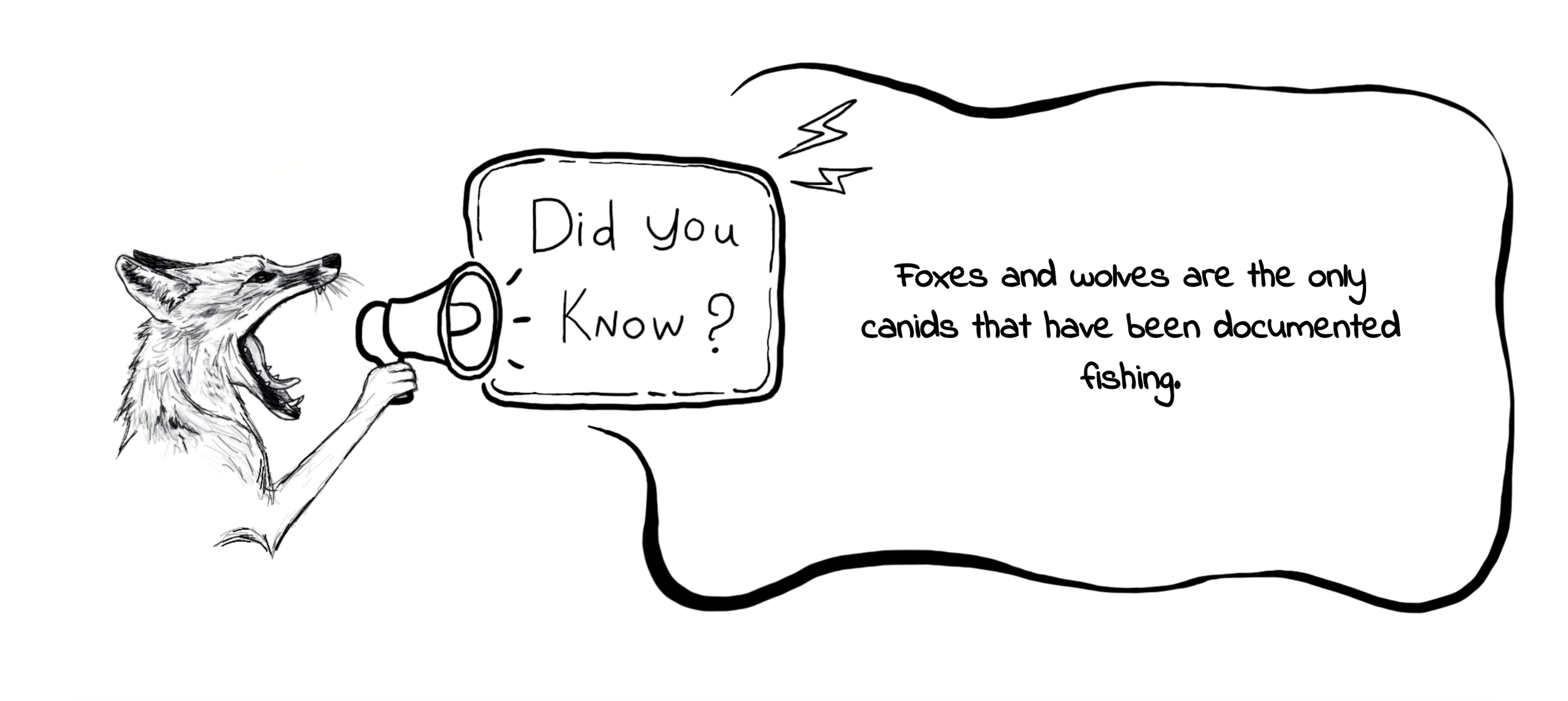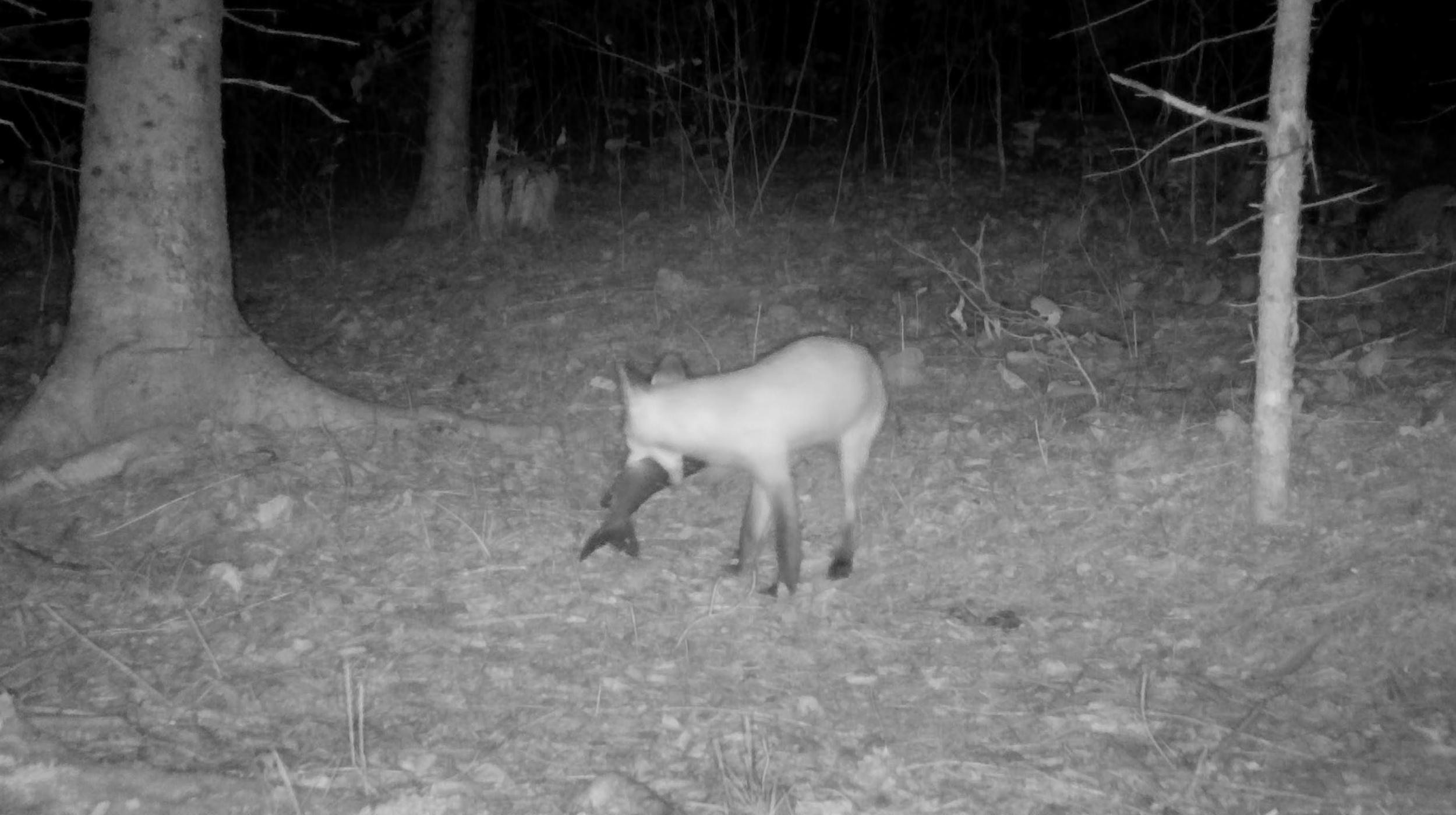Fishy Business: Red Foxes' Surprising Fishing Techniques
Written by Maeve Rogers, Wolf Predation and Research Technician & Conservancy Volunteer
Up around Voyageurs National Park, there are three distinctive canid species that call the state’s only national park home; the Gray wolf (Canis lupus), the Coyote (Canis latrans), and the Red fox (Vulpes vulpes). Wolves and coyotes may often steal the spotlight, but have you ever wondered about the cunning nature of the red fox?
The red fox is a fascinating and opportunistic mesocarnivore species that takes advantage of various prey based on their abundance and accessibility. The species’ adaptiveness has made it one of the world's most widely distributed carnivores. These small predators exhibit impressive foraging skills, displaying a remarkable ability to adjust their diet and turn to alternative prey when their primary food sources become scarce. Foxes can thrive in diverse urban and agricultural areas, where they capitalize on human-provided foods. This adaptability extends to their hunting strategies, as fox diets encompass a variety of smaller mammals, fruit, birds, vegetation, and insects. However, recent observations have shown foxes engaging in a rather unexpected behavior - fishing!
In a recent study conducted in 2022 near the Valuengo reservoir in Spain, researchers witnessed a male red fox displaying remarkable fishing skills. Researchers Tobajas and Díaz-Ruiz explored the fishing behavior of red foxes in their one-of-a-kind article “Fishing behavior in the red fox: Opportunistic-caching behavior or surplus killing?”. They observed a fox using cunning tactics to target European carps (Cyprinus carpio) during their vulnerable spawning period within shallow pools of water. This unique, and understudied behavior challenges our previous understanding of foxes as hunters.
Graphic by Maeve Rogers
This was the first documented observation of a fox hunting multiple fish, and the fox revealed a strategic ambushing approach:
The fox aligned itself right along the bank of a nearby shallow pool of water containing carp
The fox would seemingly wait for the moment when the carp became distracted by their spawning activities or appeared stuck
The fox would then swiftly dive nose-first into the water in attempts to catch a fish
This technique proved highly effective, with an impressive 83% success rate in capturing medium-sized carps. Even more intriguing was the post-capture behavior. The fox stashed the fish away, presumably for later consumption. This behavior has significant ecological implications as it challenged researchers' understanding of foxes' dietary flexibility and their ability to capitalize on seasonally available food sources. The groundbreaking study done by Tobajas and Díaz-Ruiz provides concrete evidence of active fishing behavior in foxes.
Credit: Voyageurs Wolf Project
Interestingly, wolves on the Pacific coast of North America and Minnesota are the only other type of canid known to fish. Since 2017, the Voyageurs Wolf Project documented multiple wolves across different packs actively ambushing spawning White suckers (Catostomas commersoni) around Voyageurs National Park (Gable et al., 2018, Freund et al., 2023). Similar to foxes, wolves have been observed waiting in ambush along shallow streams of water during the short spawning window. Wolves have also been documented stashing fish, but it is unclear how common this behavior is. However, fishing behavior observed in multiple canid species across continents suggests that this behavior may be more widespread than previously believed.
Graphic by Maeve Rogers
There is very little documentation of fox fishing behavior in North America; however, scat analysis has revealed that fish can be a part of the species diet. In Voyageurs National Park, a trail camera deployed to study wolves in the area captured a red fox traveling with multiple medium-sized fish. The camera was set up by the Voyageurs Wolf Project along the shores of Lake Kabetogama, nearly a mile southeast of the Ellsworth Rock Gardens. The camera recorded at least three observations of the same fox traveling with a fish at this location. All the fish appeared fresh in the videos due to glistening scales and intact carcasses.
These observations are incredibly interesting, but it cannot be confirmed whether or not the fox actively hunted these fish or scavenged them. Other cameras in the Voyageurs region captured additional instances of foxes traveling with fish carcasses, but no definite documentation of a fox ambushing fish.
Credit: Voyageurs Wolf Project
Graphic by Maeve Rogers
Wild canids' fishing behavior has been poorly documented because it is so rare to observe, primarily due to the limited seasonal availability of fish to these predators. The minimally observed behavior raises questions about the evolutionary adaptations of foxes, such as:
Is this fishing strategy a learned behavior passed down through generations?
Can individual foxes develop the skill based on their unique experiences?
How common is this behavior among fox populations?
Is the fish-caching behavior common among foxes that have the ability to fish?
Understanding such nuances in animal behavior is crucial for continued conservation efforts and ecosystem management. These unique observations also highlight the complexity of nature and remind us of the continual surprises awaiting discovery within nature. The rare fishing behavior seen in foxes is just an example of how much scientists still don’t know about the natural world, even for species that live close to humans.






